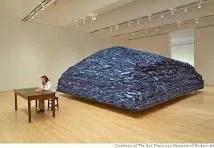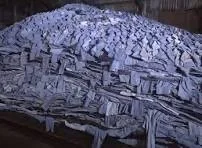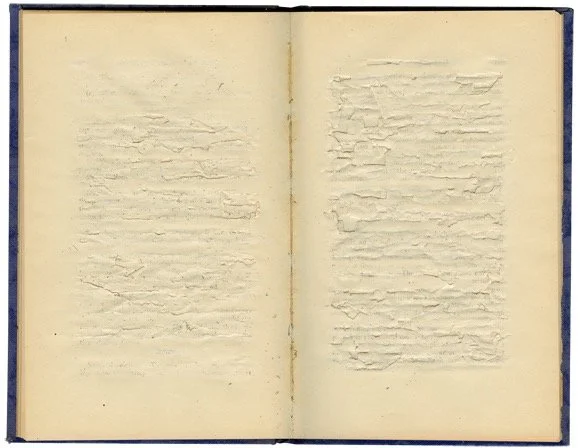Ann Hamilton 'Indigo Blue' 1991
SF MOMA - Ann Hamilton interview
TAKEAWAYS:
AH asks: How do materials carry an embodied knowledge?
Research economy of the area and found Indigowas the first ‘cash crop’ in South Carolina.
Labour history associated with the colour blue.
Indigo went from high end wallpaper colouring to colouring for work clothing. High-end to the everyday.
Using work clothing that comes from labour; the labour associated with the crop (harvesting), the work clothing and as a symbol of the working class.
AH asks: How can materials evoke the presence of something that’s not stated?
They received a truck load of used working clothing, which they had to sort, stack and fold. (verbs)
It occurred to the artist that the way that the material was handled, how they were touched, would become a as much a part of the meaning of the project, the embodied, embedded meaning.
Labour involved and the symbol of the labour class.
From her website:
Key Words and reference:
Rubbing out/repetitive gesture/anonymous work clothes/labour history/completely erased
Hamilton’s installation indigo blue, in the exhibition “Places with a Past: New Site-Specific Art at Charleston’s Spoleto Festival,” 1991, was keyed to the historic importance of indigo, both as a plant and as a dye, in the economy of Charleston, South Carolina. The overriding presence in the installation was a mound of 14,000 carefully folded blue work shirts. A figure sat at a desk, back to the mound of shirts, reworking books with blue covers, which Hamilton had found in secondhand stores, and which were in fact military manuals regulating the establishment of legal boundaries between land and water. The figure in performance sat reading the books back to front, clearing each page, by a gesture of wetting a Pink Pearl eraser with saliva, rubbing out a line of text, and collecting the rubber eraser crumbs in a line parallel to the uppermost edge of the book and the front of the desk. The repetitive gesture, like the anonymous work clothes, echoed Hamilton’s readings in American labor history that had informed the making of this installation. Hamilton chose two different sets of books as traces of the event. This set, (indigo blue • books), comprises four books, completely erased, which are encased in a glass and wood vitrine. The second set (indigo blue • books II), 1991, comprises five books that are incompletely erased, and lacks the vitrine.
Four altered books, glass and wood vitrine
39 ¾ × 68 × 20 inches / 101 × 172.7 × 50.8 cm (vitrine), variable (books)




